Our wild and crazy summer weather here at Middlebury continues, this time with a tree being struck by lightning. (Side note to the faithful readers out there. I feel for you-has this blog been getting depressing lately? With vandalism, more vandalism, storms, more storms, even still more storms, and disease, it seems like the Middlebury Landscape is getting tragic. Hold the faith! We’ve been planting as well. Posts coming soon on this year’s tree plantings, as well as a new look for Pearson Hall.)
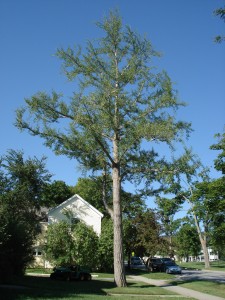
The tree hit is a Ginkgo ( read here if you’ve forgotten about them) located in front of one of Middlebury’s “outside” houses, near Public Safety at 121 South Main Street. I don’t know the night it got hit, but it was brought to my attention by one of the diligent members of our crew. Looking at the tree originally, I first thought the tree had just cracked down near the base, possibly in some strong wind. The tree shows what arborists call co-dominant trunks, where two trunks of equal size meet and grow together. This is frequently a recipe for disaster, as a bad union often results, where included bark makes a weak joint, and the two trunks typically fall apart away from each other.
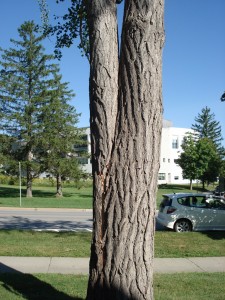
I called an Arborist friend to consult on the damage-this is one of our favorite trees in Facilities, many of us would mourn the loss. His skill, knowledge, and experience led him to look up the tree, rather than me just jumping to the first obvious conclusion, and that was how he discovered the damage around the cable up top, as well as noticing the toothpick sized wood pieces scattered around the yard, small pieces of trunk blown away from the tree from the force of the lightning. Being tree geeks, we climbed up to investigate.
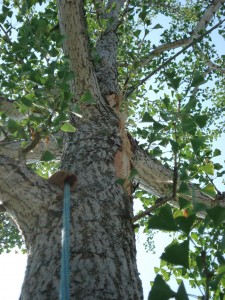

Trees are frequent targets of lightning. Standing alone, frequently taller than many buildings around them, many trees get hit each year. Lightning is fascinating all on it’s own, with their impressive 100 million volts and temperatures greater than 50,000 degrees fahrenheit. 16 million lightning storms are estimated worldwide in a year, and measuring instruments record over 100 million strikes in the U.S. each year, killing on average 90 people. They even get their own phobia, Astraphobia, fear of lightning.
The conditions needed for lightning are still debatable, but should those conditions exist, negative ions accumulate at the base of the storm clouds, while positive ions pile up on the ground. “Stepped Ladders” descend from the clouds, while “streamers” arise from the earth, typically strongest from the tallest structures, such as buildings or trees. Should they build strong and fast enough, they meet to form a lightning bolt, and this electrical discharge super heats the air around it to 36,000 degrees fahrenheit, compressing the air creating supersonic shock wave we hear as thunder.
When lightning strikes a tree, the sap in the tree boils, turning to steam and blasting the bark away from the trunk. The electrical charge flows through the tree, exiting out the root system, which could be severely damaged in the process, sometimes with no visible sign above. In most cases, though, a strip of bark is torn from the tree, often in a long strip, but sometimes, like this ginkgo, only above and below. Trees with only one crack tend to close the wound and suffer, yet live, while trees with wounds on both sides of the trunk are frequently killed outright. Obviously, even a wounded tree can die from secondary reasons, such as insects and diseases, less able to fight them off.
Trees vary in their susceptibility to lightning strikes, possibly for biological reasons, or possibly simply because of their height. Elms, Oaks, Black Locust and Ash tend to be very susceptible, while Beech, Horsechestnut, and Birch tend to not be very susceptible. It may be the starch content of the tree making it more susceptible, while resinous trees are poorer conductors.
So there is hope for our Ginkgo. The wound at the bottom was traced, where loose bark is peeled away carefully from the trunk to the point where it attaches again. The thinking with bark tracing is that loose bark can trap moisture and disease, so by removing it the wound can dry better. Maybe it’s just something to do to make arborists feel not quite so helpless…
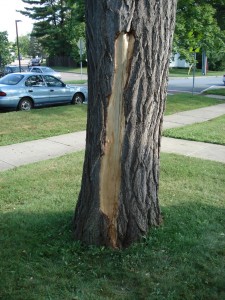

The cabling up in the crown of the tree is a little more problematic. Originally put in place to help stabilize the two co-dominant stems, the system now obviously cannot be trusted, as the wood surrounding the bolts holding the cable is now dead. We decided to replace the cable with two others, one above the old cable (a better location from an engineering perspective), but also one looser below, in case one of the stems fails completely at the original cable site, and breaks. The tree will then still be braced by the lower cable.
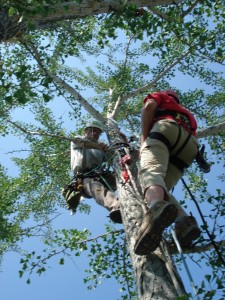
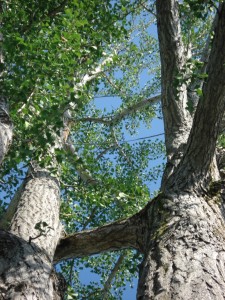
So now, we wait. The rest of this year, and into next spring, will be the crucial time, and when we shall see just how bad the strike was. Should it still appear somewhat healthy next spring, we will aerate the soil around the tree, add compost, fertilize, and mulch. Hard to imagine now, but, if we get a little drought this summer, we’ll even go down to water.
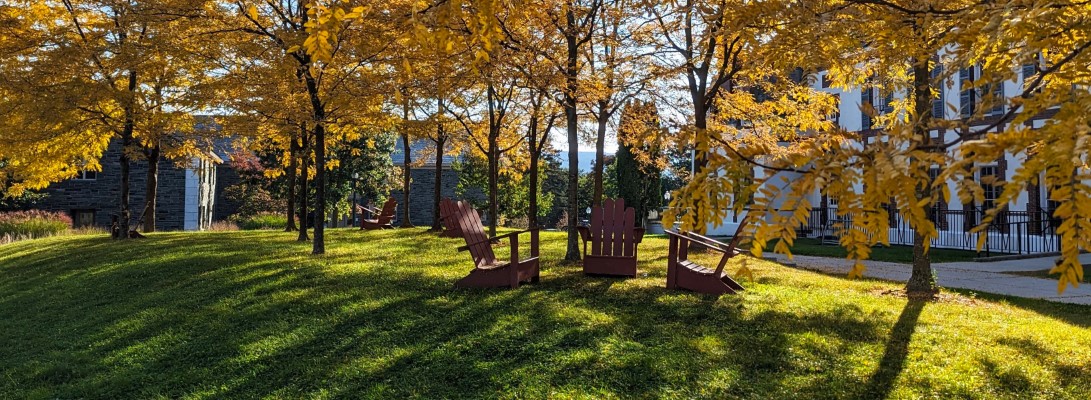
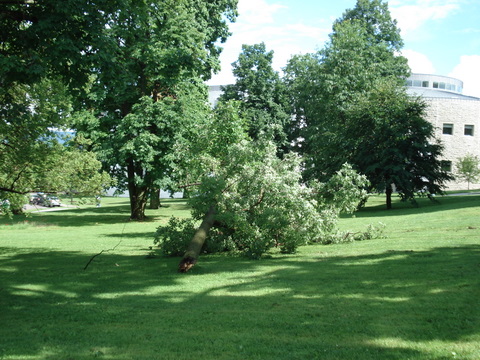
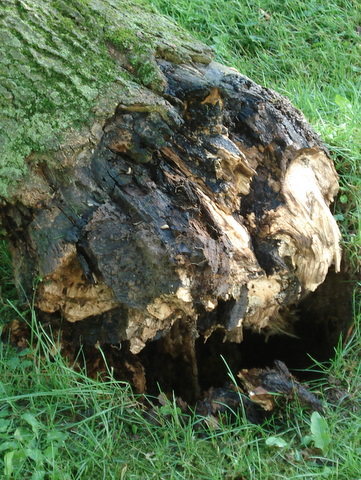
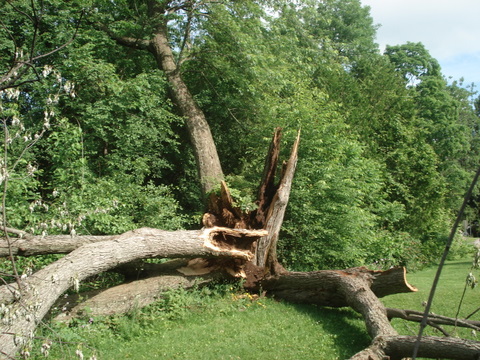
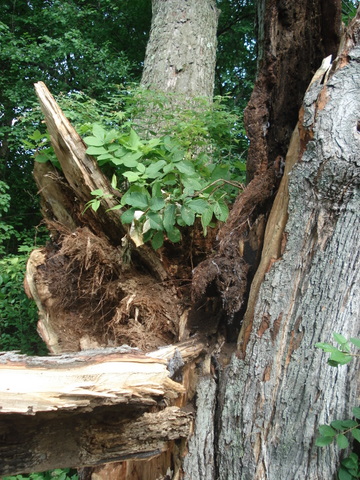
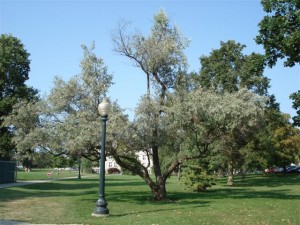
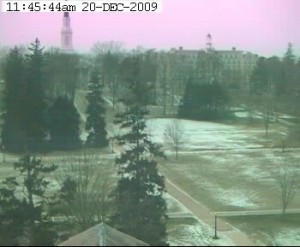
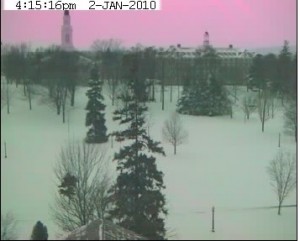
You must be logged in to post a comment.